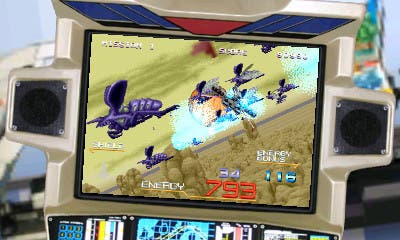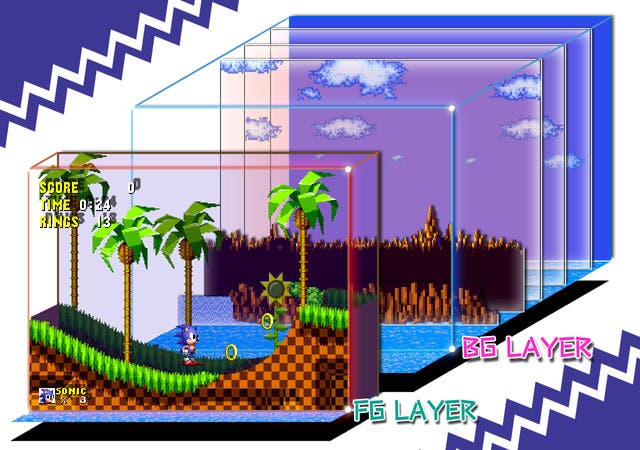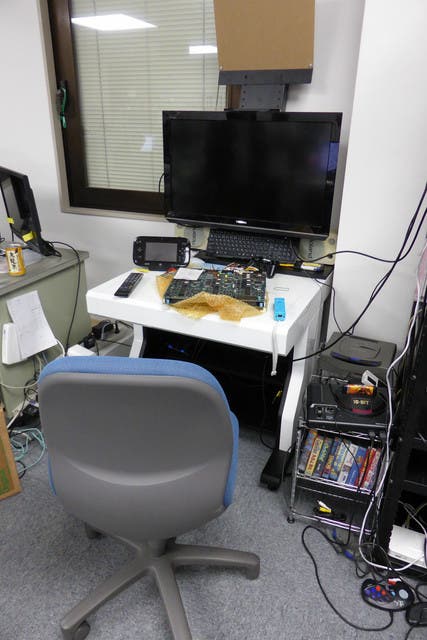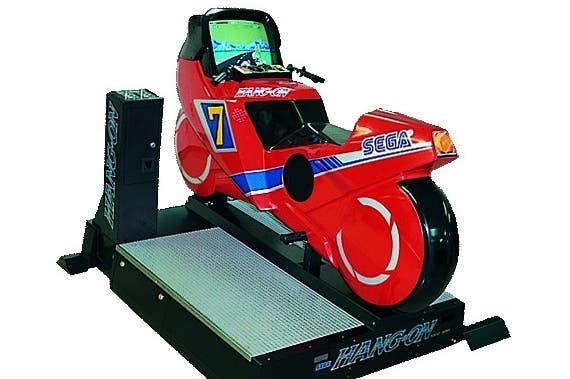Remembering Sega's classics the right way
Exploring M2's brilliant 3DS revivals.
I finally got to see Abel Gance's Napoleon last weekend, and like pretty much anyone else who's been fortunate enough to witness the six hour silent epic, I've been obsessed with it ever since. It's sadly too rare an occasion to be able to see Kevin Brownlow's restoration of the 1927 visionary masterpiece, thanks partly to some unpleasant business with Francis Ford Coppola, but largely down to its grand Polyvision finale that requires three projectors and three screens.
All of which has meant, for much of its life, Napoleon has gone unwatched and unappreciated: its omission from Sight & Sound's top 100 has more to do with the difficulty in watching the film rather than the film itself, which is certainly more than just one of the greats of the silent era.

It'd be a shame to see classics of video game's own brilliant dawn lost or forgotten in similar circumstances, but thankfully we've got some truly talented people working to make sure that they're within easy reach, and that their original brilliance isn't diminished by age or circumstance. Following a string of revivals of Sega classics on the 3DS, it's Tokyo studio M2 whose work has been most notable of late - and since picking a handful of them up last week, they've fast become another obsession.
If you've ever dabbled in Sega's back-catalogue before, you may well already be familiar with M2 - it's a studio that's been working wonders ever since it managed to port Treasure's Gunstar Heroes, a slick wedge of action that was already pushing at the boundaries of Sega's Mega Drive, to the Game Gear. In the 20 years since, it's a studio that's quietly made a name for itself through other such feats, whether that's been delivering impeccable cover versions of old standards such as in 2009's WiiWare outing Gradius Rebirth, or retouching classics as it did throughout the PlayStation 2's Sega Ages series.
But M2's finest work, to my mind, has been the recently released 3D Sega Classic series. They're restorations that go beyond mere emulation, exploring the context and eccentricities of each game under the spotlight. And the work produced in Sega's golden age that stretched from the mid-80s to the early 90s is certainly not short of some delightful quirks.

Yu Suzuki's at the forefront of that particular trend, of course, the designer never shying away from new ideas or, more importantly, new hardware. In his willingness to innovate and his ability to think big, Suzuki's pretty much a loose analogue of Gance: both created masterpieces accompanied by a pocketful of patents, the pair having to invent new technologies to accommodate their grand visions while laying the foundations for what was to come. It's that willingness to innovate, and that refusal to compromise, that makes the results of their work hard to replicate, though.
Suzuki's own Polyvision came, early on in his career, through the cabinets that hosted his creations. Space Harrier and Super Hang-On are both examples of 'taikan' games, arcade exhibits featuring extravagant hardware that bolsters the software. In Space Harrier's case, it's a hydraulic cockpit that encloses the player, and a flight-stick that offers crisp analogue movement through the game's surreal savannas, while in Super Hang-On's it's a real life, full-sized bike that can be physically leant into digitised corners.
Replicating such opulence outside of the arcade has always been hard, and subsequent home ports of both games, no matter how faithful to the code, have never managed to capture the grandeur of the originals. M2's efforts, though, come mightily close. It's not just in the allure of the stereoscopic 3D used in Nintendo's handheld that goes some way to replicating the impact both games had on their original audience - it's in the plethora of details the studio's added to simulate some of that arcade experience.

In Space Harrier, the 3DS's nub does a good job of matching the arcade cabinet's flight-stick for fidelity of control, the 3D effect pulling you into the screen, but it goes further. There's an option to mimic the movement of the cabinet, and beyond that an option to even mimic the plastic groans and hydraulic creaks to underscore that thumping soundtrack. It's a brilliant acknowledgement of how the appeal of so may arcade games isn't just in the bare code, but rather in the paraphernalia around it, and in the magic of their spectacle.
Super Hang-On 3D's an even more fitting subject, as the experience of tilting plastic in order to turn has never really been satisfactorily captured in home ports, and without that accompaniment the game's legacy has been somewhat sullied. M2 rectifies that, though, making perhaps the best use of the 3DS' gyroscope to date in its approximation of the original cabinet's handling. It makes them feel, perhaps for the first time outside of the arcade, like real bikes with which you can hold corners before fully getting your knee down.
M2's work has extended to other, less well-known properties too. Galaxy Force 2's 3DS port rectifies the damage done by a sub-par Mega Drive version over 20 years ago to reveal the arcade original to be something of an unsung star: with its cinematics and 60fps spectacle, it's exposed as a thrilling and dramatic predecessor to the likes of Starfox, its fireworks delivered with typical Sega muscle. It's no wonder Diana Ross, who reportedly owns a deluxe cabinet, is a fan.
The attention to detail is exquisite, and it's worth poring over a recent series of Iwata Asks-esque interviews with M2 on Sega's blog to see exactly how far it reaches (as well as enjoying an odd running joke about Thunder Blade). In Sonic the Hedgehog, it's a thoroughness that's staggering - in the process of getting Yuji Naka's original up and running in 3D, the team created what's effectively an all-new Sega console, lovingly dubbed the GigaDrive. It's inclusive of Sega's other hardware too: there's an option to play using the deeper sound produced by the first model of the Mega Drive, or the tinnier output of its stripped-down successor. And while the parallax scrolling of Green Hill Zone looks splendid in 3D, in classic mode it's even better, wherein the 3DS's screen is used to replicate the curvature of a CRT screen.
It's intoxicating stuff, and arguably no less than the fruits of Sega's golden age deserve. If only other companies extended the approach of M2, I'd be happy that not only are old classics not being forgotten, but that they're being remembered in the right way too.

